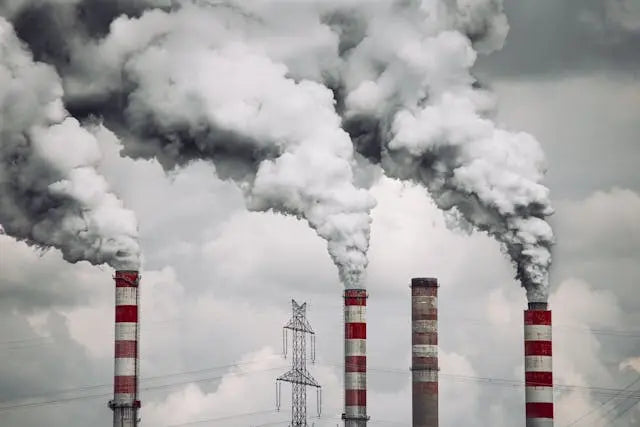
Hawaii Replaces Last Coal Plant with Battery Storage
Share
Hawaii has taken a groundbreaking step toward a sustainable energy future by replacing its last coal-fired power plant with a large-scale battery storage system. This transition marks a significant milestone in the state's commitment to achieving 100% renewable energy by 2045. But how does this battery system work, why is it a sustainable solution, and what impact will it have? Let’s take a deep dive into Hawaii’s energy transformation.
The Shift from Coal to Batteries
Hawaii's last remaining coal plant, the AES power plant in Oahu, was responsible for generating approximately 20% of the island’s electricity. However, it also emitted around 1.5 million metric tons of carbon dioxide annually, making it one of the state’s largest sources of greenhouse gas emissions.
In its place, the Kapolei Energy Storage (KES) system has been developed by Plus Power. This battery system aims to not only replace the lost power capacity but also stabilize the grid in an efficient and sustainable manner.
“This project represents the future of energy: reliable, clean, and responsive to grid demands,” said a representative from Hawaiian Electric.
How Does the Battery Storage System Work?
The Kapolei Energy Storage system consists of 158 Tesla Megapacks with a discharge capacity of 185 megawatts (MW) and a total storage capacity of 565 megawatt-hours (MWh). The system operates by:
-
Charging – During peak solar energy production hours (typically midday), the batteries store excess renewable energy.
-
Discharging – When demand peaks in the evening or when renewable sources are insufficient, the stored energy is released into the grid.
-
Providing Grid Stability – The system offers services such as fast frequency response and synthetic inertia, which help prevent power disruptions.
-
Black-Start Capability – In the event of a power outage, the batteries can restart the grid by jump-starting other power plants.
Why is This a Sustainable Solution?
Replacing coal with battery storage is a crucial step toward sustainability. Here’s why:
-
Eliminates Fossil Fuels: The decommissioning of the AES coal plant means Hawaii is no longer dependent on imported coal, reducing carbon emissions and reliance on fossil fuels.
-
Maximizes Renewable Energy Usage: The battery system significantly reduces curtailment of solar and wind power. In fact, Hawaiian Electric estimates a 69% reduction in renewable energy curtailment over the next five years.
-
Enhances Grid Reliability: Unlike coal plants, which require a constant supply of fuel and produce emissions, battery storage can quickly adapt to fluctuations in energy demand, providing a stable and clean power source.
“The retirement of our last coal plant is a pivotal moment for Hawaii and a key milestone in our transition to 100% clean energy,” said Scott Glenn, Chief Energy Officer of the Hawaii State Energy Office.
Key Facts and Figures
-
Capacity: 185 MW discharge, 565 MWh storage
-
Location: Kapolei, Oahu, Hawaii
-
Developer: Plus Power
-
Components: 158 Tesla Megapacks
-
Operational Since: December 2023
-
Reduction in Renewable Energy Curtailment: 69%
-
Previous Coal Plant Emissions: 1.5 million metric tons of CO₂ per year
The Broader Impact on Hawaii’s Energy Landscape
Hawaii’s transition away from coal is part of a larger strategy to rely on locally sourced renewable energy, including solar, wind, and geothermal. By utilizing advanced battery technology, the state is:
-
Reducing Dependence on Imported Fossil Fuels: Previously, Hawaii imported all of its coal and oil, making energy costs volatile and environmentally damaging.
-
Leading the Way for Other States: Hawaii’s model demonstrates that large-scale battery storage can successfully replace traditional fossil fuel plants.
-
Encouraging Innovation in Energy Storage: The success of the KES system could inspire similar projects across the U.S. and globally.
Conclusion
Hawaii’s replacement of its last coal plant with the Kapolei Energy Storage system is a landmark achievement in the global transition to renewable energy. By leveraging cutting-edge battery technology, the state is not only reducing carbon emissions but also ensuring a more resilient and sustainable power grid.
As other states and nations look for ways to phase out fossil fuels, Hawaii’s model provides a powerful blueprint for integrating renewable energy with battery storage. With the right policies and investments, a cleaner, more sustainable energy future is within reach for communities around the world.
“This is a historic moment for Hawaii and a testament to our commitment to clean energy,” said a spokesperson for Hawaiian Electric. “We are proving that a future without coal is not just possible—it’s happening now.”

